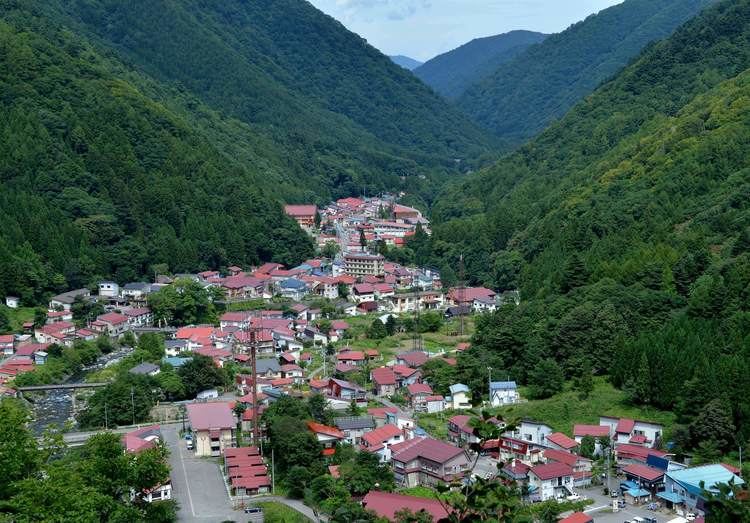- Flower Asian skunk cabbage Population 616 (Sep 2014) | Area 390.5 km² Local time Sunday 9:03 AM | |
 | ||
Weather -2°C, Wind NW at 3 km/h, 47% Humidity Points of interest Okutadami Dam, Mount Hiuchigatake, Mount Aizu‑Komagatake, Sanjō Falls, Hiuchi no Yu | ||
Hinoemata (檜枝岐村, Hinoemata-mura) is a village located in Minamiaizu District, Fukushima Prefecture, in northern Honshū, Japan. As of September 2014, the village had an estimated population of 616 and a population density of 1.58 persons per km². The total area was 390.50 km². It is locally famous for its soba (buckwheat noodles) and known nationally for its kabuki performances and as a gateway to the Oze marshlands.
Contents
- Map of Hinoemata Minamiaizu District Fukushima Prefecture Japan
- Geography
- Neighboring municipalities
- History
- Economy
- Education
- Railway
- Highway
- Local attractions
- References
Map of Hinoemata, Minamiaizu District, Fukushima Prefecture, Japan
Geography
Located in the southwestern corner of Fukushima prefecture, Hinoemata is surrounded by the mountains Komagatake, Mount Taishaku, and Hiuchigatake (the highest mountain in northwestern Japan). Between these mountains runs the Hinoemata River. It is known for having the lowest population density of any municipality in Japan.
Neighboring municipalities
History
The area of present-day Hinoemata was part of ancient Mutsu Province and formed part of the holdings of Aizu Domain during the Edo period. After the Meiji Restoration, it was organized as part of Minamiaizu District.
Hinoemata was formed on April 1, 1889 with the establishment of the municipalities system.
Economy
The economy of Hinoemata is primarily agricultural.
Education
Railway
Hinoemata is not served by any train stations.
